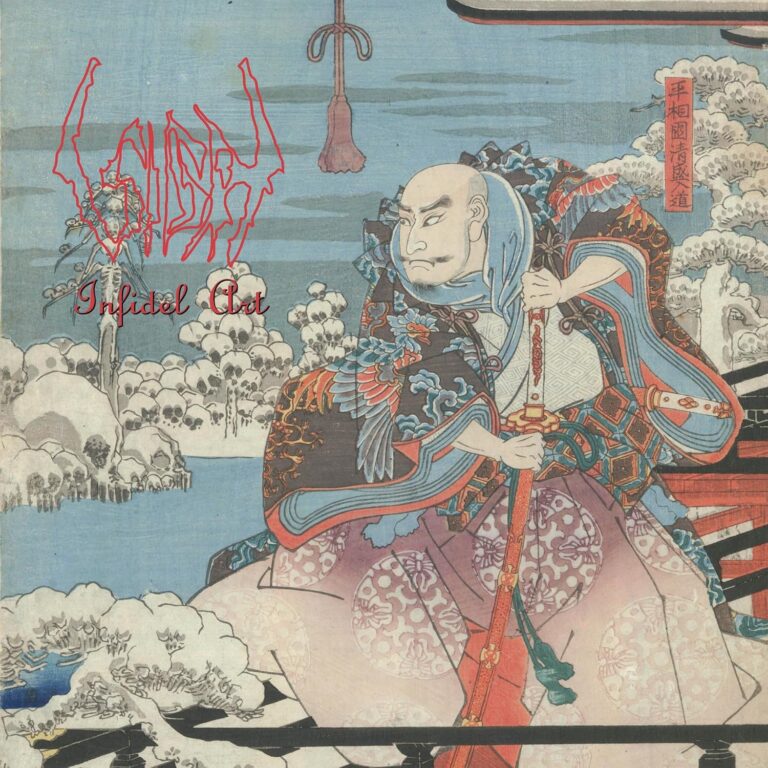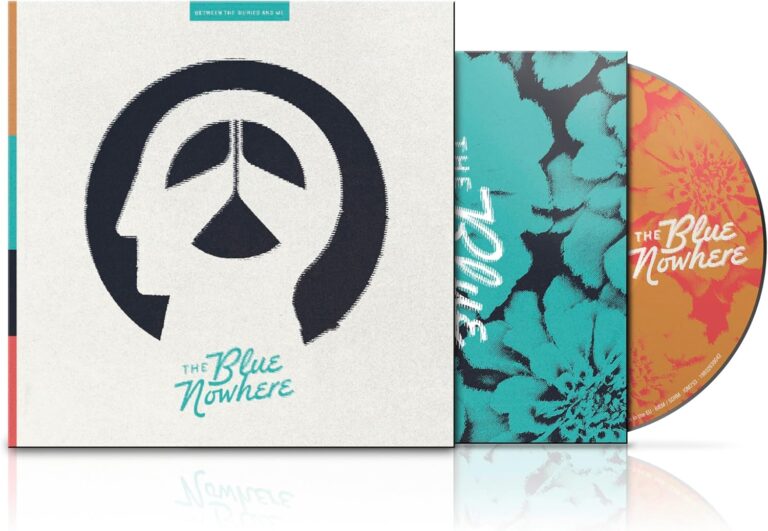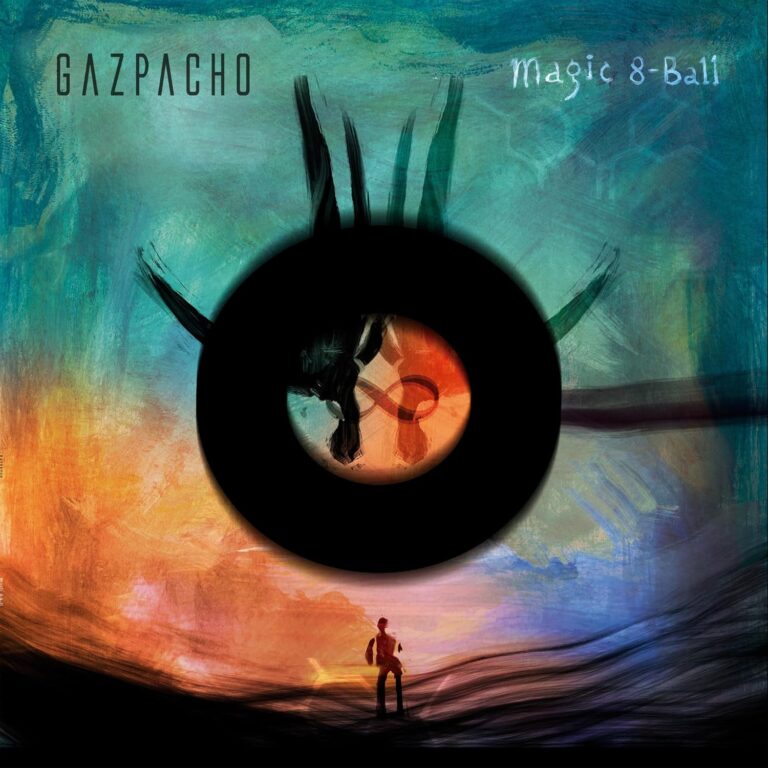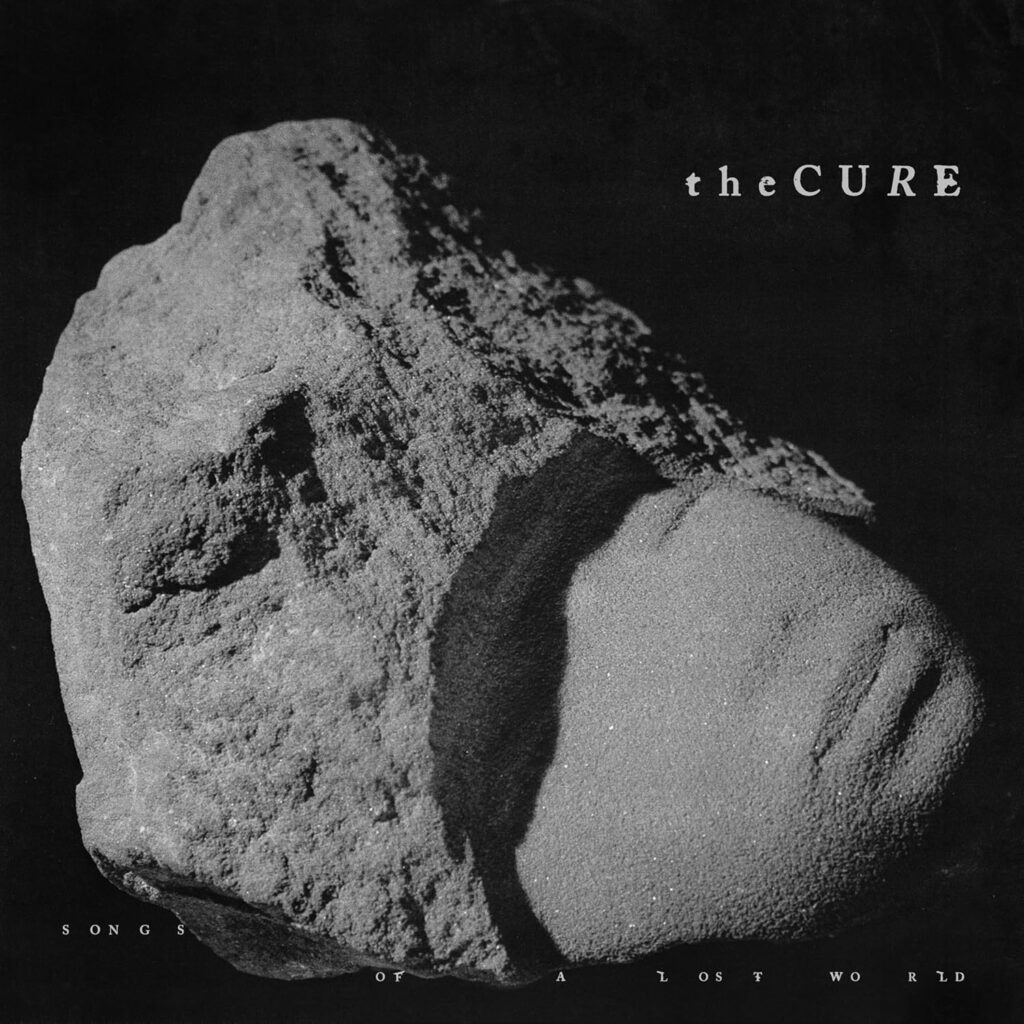
It’s hard to believe that I’m here, holding a new Cure album in my hands. Despite a recent bout of touring, it was starting to feel like the band had no real interest in delving into their tattered psyches once more, with a remarkable sixteen years having passed since their last effort, 4:13 Dream. With hopes for a follow-up fading away with each passing season, it’s nothing short of astounding that we’re here at all and yet, with the gloriously monochrome Songs Of A Lost World, The Cure have returned with an album that has not only racked up some suitably hyperbole-laden reviews, but which has also achieved the somewhat astonishing feat of elbowing its way into the charts. No small matter in these febrile times.
Formats
The album is available in various formats to suit all tastes and budgets – digital, vinyl, single-disc CD, and a tempting 3-disc deluxe edition, featuring the entire album in instrumental form as well as a blu ray disc offering high resolution stereo and Dolby Atmos options.
This review is for the deluxe edition.
The Package
The triple-disc set comes housed in a quad-fold digipack. These packages, while relatively cheap to put together, really need internal sleeves for the discs, as there’s a tendency to scratch over time. Nevertheless, it’s a handsome set, with the artwork (‘Bagatelle’, by Janez Pirnat) neatly complemented by the enigmatic close ups found within. The booklet contains all the lyrics, with additional scattered images but, as by now will be expected, no band shots. All in all, it’s a decent enough set at the price, with the emphasis placed firmly on the music, but I’d recommend fans invest in additional sleeves if they want to keep the discs safe.
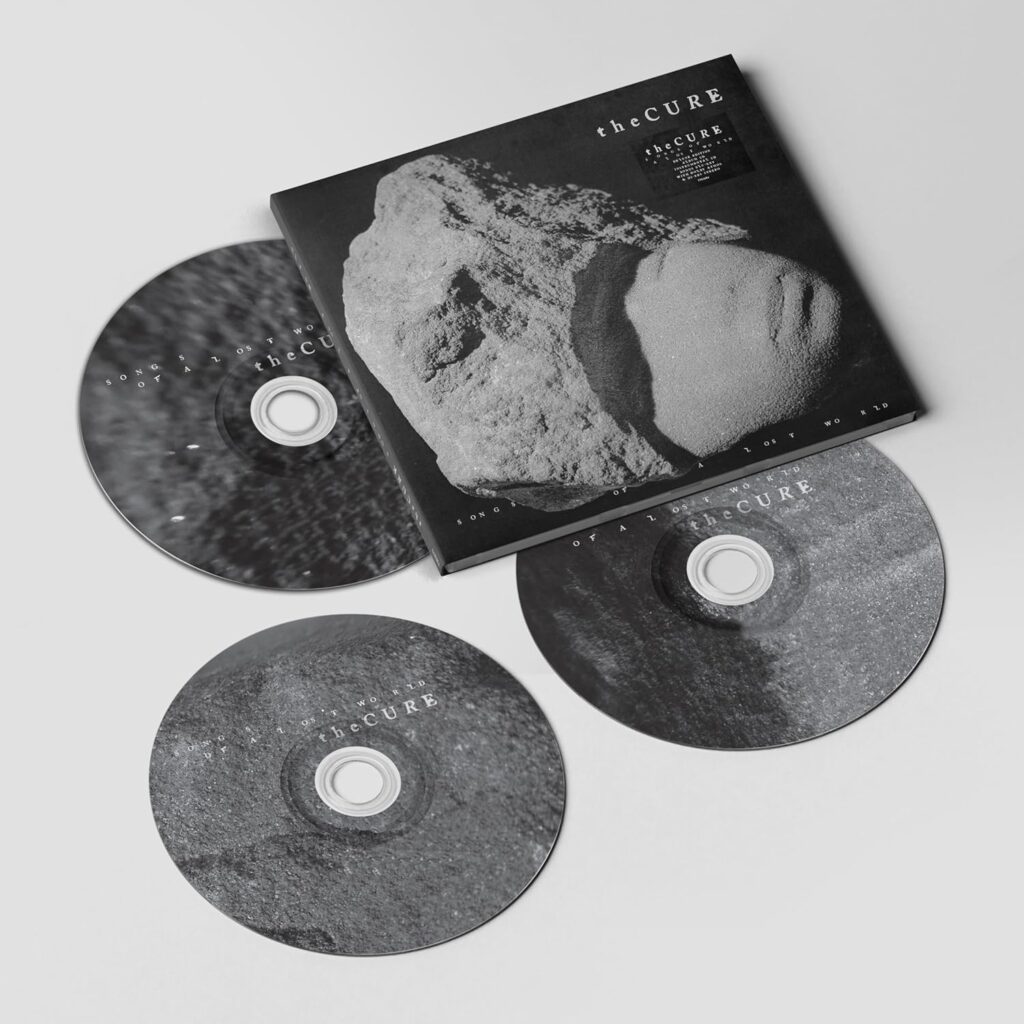
The Album
Tracked at Rockfield Studios in Wales, the album finds Robert Smith working with longtime collaborator Paul Corkett on production. As such, despite the intervening gap, little has changed in the sonic world of The Cure, the band’s uniquely oblique soundscapes as inscrutable as ever. That’s one of the reasons why you should never review a Cure album on the first listen – there’s simple too much lying beneath the surface to take in over the course of one sitting – and that is certainly the case here.
Truth be told, even if you had no idea The Cure were bringing out an album, a simple glance at the song titles would tell you the band were somewhere in the vicinity – Alone, And nothing Is Forever, A Fragile Thing… If nothing else, Robert Smith has hardly dispensed with his penchant for gloom. And so, into the deep we plunge.
The album opens with the glacial beauty of Alone, which finds layer after layer of guitar duelling Jason Cooper’s industrial strength drums and Roger O’Donnell’s keys. Harking back to the still untouchable Disintegration, it’s a slow building piece that weaves its way towards Robert’s voice, only reaching it after three minutes of subtle meandering. It’s a typically contrary move – to open a much-anticipated album with the words “this is the end of every song that we sing” but, if this is the end, it’s a remarkable way to conclude things. It’s followed by the surprising beatific And Nothing Is Forever, a song that emerges from rippling piano and soaring strings to wrap itself around the listener, a mixture of processed drums and picked guitars adding to the blissful air that pervades the piece. It’s a song that, in almost anyone else’s hands, would risk coming off as mawkish, yet here it feels entirely natural thanks to the depth and skill of the arrangement.
The pace, insofar as the darker edge of The Cure allows, picks up on the tightly wound third track, A Fragile Thing. Driven by Simon Gallup’s instantly recognisable bass, it’s another track with a strong Disintegration vibe, Robert’s voice swooping between the layers of guitar and synth, alternately calling you from a distance and whispering in your ear. The first half then wraps up with War Song. Every bit as visceral as its title implies, it is a dark and doomy piece, anchored by Simon’s churning bass and given greater weight by Roger’s proto-industrial synth patches. With Reeves Gabrels adding blizzards of feedback, it evokes an air of claustrophobia that recalls the slow-motion horror of Carnage Visors.
Opening the second half, the vital surge of Drone: No Drone sees stabbing, wah-inflected guitars and a pulsing beat nod to the excellent Wrong Number (incidentally, the first song to feature Reeves on guitar). Resetting the atmosphere after so rampant a piece, the piano-led I Can Never Say Goodbye is a subtly moving track with jet black gothic undertones and post-punk basslines. One of those songs that just seems to build and build, the track slowly eclipses all around it, before slipping back into the icy waters of the opening piano lines.
Up next, Jason’s incessant toms pave the way for the rhythmically awkward All I Ever Am, which seems to delight in wrongfooting the listener – the melodies shifting into focus just in time for the vocals to work their way into your brain. With lengthy instrumental passages punctuating the track, it reminds us that that The Cure operate in their own unique sonic space – eschewing the artificially imposed structures of radio play and Spotify algorithms for something far more satisfying. The album concludes, aptly enough, with End Song. Like Alone, it takes its time to build towards the vocals, the drums, guitars, and keys warily circling one another, unwilling to make the first move. With so much emotion invested into its stately progress, it’s the perfect conclusion to a varied and captivating record.
Despite the intense anticipation that greeted the announcement of a new Cure record, Songs Of A Lost World easily bats aside such expectations. The band remain interested in sounding like nothing other than themselves, and the result is an album that nestles comfortably alongside the best of their storied back catalogue. If there is a complaint, it’s that the production, which is otherwise clear and well separated, is somewhat over compressed – fighting the dynamic that Smith breathes into his songs, and coming over surprisingly hot, particularly on songs like War Song. In other instances, the objection could prove fatal, but there’s enough clarity in the mix to keep you hooked, although it would be amazing to hear a full dynamic range remaster.
Instrumentals
Given the depth of the arrangements, an instrumental version of the album makes perfect sense, and it’s a bonus disc to which fans will find themselves returning. With many of the pieces introducing vocals late on, and with these often used as much for texture as to drive the songs, it is nice to hear the album in this form, and it highlights just how much thought goes into these slow building works of art.
Inevitably it is the slower pieces that benefit the most – tracks like Alone, which seem to slowly evolve in front of you – although a surprising highlight is the string-soaked beauty of And Nothing Is Forever, which carries even greater emotional heft when shorn of vocals. Even tracks that feel like they should primarily be vocal pieces, such as the crisp and concise A Fragile Thing, reveal nuances, often in the synths, that are far less apparent in the vocal mixes, and you find yourself listening to the record with a whole new appreciation as a result.
While not every band could (or should) reveal the inner workings of their craft by offering instrumental versions of their work, there is so much attention to detail in a Cure track that you find yourself experiencing this unique album in a wholly different light having listened to it in this form.
Surround
For those who have the equipment, the third disc in the set – a blu ray – is yet another way to experience a record that is already incredibly immersive. With high resolution stereo (96/24) and Dolby Atmos options available, it is as beneficial for those with high quality soundbars as it is for those who like to truly lose themselves within an album, and it’s worth the price of admission alone (especially when other artists have taken to packaging such discs as standalone releases).
Fire up the disc and a simple menu emerges, offering you the option to simply play the album, select a track, or choose the audio mix. Click through to the album and you’re greeted with a slowly pulsing version of the album cover, which only serves to make the album even more hypnotic. Otherwise, there are no video extras or bonus tracks.
Sadly, our aging system simply couldn’t handle the Atmos mix, unexpectedly processing it in stereo rather than downmixing to 5.1. Nevertheless, the high-resolution stereo track provided a crystal-clear listening experience that still made it a worthy extra, albeit with the same hot edge that slightly marred the CD version. There are rumours that the Atmos mix actually has greater dynamic range, although we’re not in a position to confirm this.
Conclusion
Sixteen years is an eternity in the music business, and yet The Cure manage to make it sound like they’ve never been away. Minor production missteps notwithstanding, it’s a remarkable album – emotionally powerful and as memorable as a anything to which the band have put their name. Who knows what will happen next but, for now, we can simply be glad that Robert Smith and The Cure cared enough to bring us this new glimpse into their fractured world. 9/10

